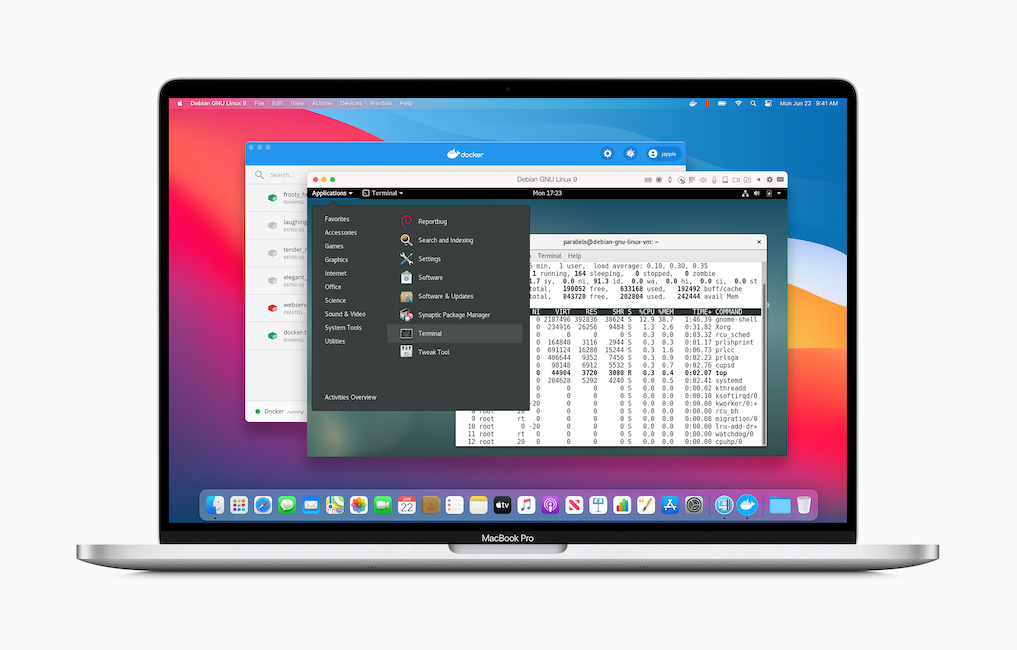|
|
Sunday Diversion: Reflections on WWDC; Surprises we all Hoped were ComingBy Graham K. Rogers
Early in the year, it was obvious the live conference was impossible, but what Apple came up with was a worthy replacement. With a good team from Apple, especially Craig Federighi who was everywhere - as well as the back-up presentations each dealing with a specific aspect of the new technologies introduced - the effect was professional. I was left feeling rather satisfied, although some of that was due to what was announced. Perhaps the only time I missed the audience was after the trailer for Asimov's Foundation, that is being prepared for Apple TV+. The silence emphasised the power of the trailer and what is to come. Tim Cook began the presentation, then stepped back, perhaps more than usual this year, with the structure. Major points which are well covered by other sources are iOS 14, WatchOS, macOS Big Sur, and the move from Intel chips to AppleSilicon. They were careful not to use ARM when describing this development.
 Apple Silicon - Image courtesy of Apple
In the days of the PowerPC, while the G5 was performing respectably in desktop machines, the need for it to have decent power output and at low temperatures for notebooks just was not viable. That was when Apple apparently began to look at Intel. Eventually the switch was made although there were comments that OS X had been running on Intel for a few years: prepared early. It had a feature called Rosetta that enabled users to run PowerPC software on the new operating system. Now we are in a situation when Skylake, for example, is just not reaching the quality that was required and that affects Apple down stream. Joe Wituschek (iMore) reports on the comments from François Piednoël, the former principal engineer at Intel, that Skylake was to blame and quality assurance problems may have been the "inflection point". There has been pressure for number of years from users - and a lot of wishful thinking - to go for ARM chips with some even suggesting dropping the Macs entirely, but that sort of input is usually ignored by Apple. There are some useful comments on this and the new development, by hoakley on the Eclectic Light Company: "More pieces in Apple's Jigsaw Puzzle". However, like the move to Intel, they probably had been working on these things for years.
While Microsoft is on board already, along with Adobe, so their major software suites will be running without the need for Rosetta 2 (that will allow software developed for the Intel chips to run on Apple Silicon from day 1). Each year John Gruber hosts a live episode of his "The Talk Show podcast" but the situation needed some changes with the format according to Eric Slivka (MacRumors). However, in the live telecast Craig Federighi and Greg Joswiak chatted with Gruber who asked about a number of things, including the lack of Boot Camp. While it is not possible to boot directly into Intel-based systems, "Federighi made [it] clear that Apple is well aware of the situation, without tipping his hand on what developments may appear on that front in the coming months." This is clearly being worked on. The MacRumors page has a link to the YouTube video of the Gruber videocast.
 Apple Silicon - Image courtesy of Apple
We have already seen its other lines of silicon including the T and U chips (with the W chip for the Apple Watch), and the iPhone's Secure Enclave but the new Mac chips will allow complexities that others, tied to Intel, may never have. Tyler Charboneau in All About Circuits has an accessible technical discussion on the developments with the potential for the future. But what of the desktop Pro computers with their multicore Xeon chips?
One useful addition to iOS 14 is the opening up of the Find My app to third parties and in the MacDaily News item there is specific mention of Tile, a company that makes useful tags that can be affixed to items (bags, cases) and allows users to track them. The company had been grumbling for a while about the ways Apple works and there is also concern that Cupertino is going to produce its own Tile-like device and sink the company. As Tile's own networking system is limited by the numbers of users in any specific location, adding iOS to that mix will help them considerably. Of course, maybe Apple is fattening them up for later acquisition, although this is also going to help others. Some notes from Bryan M. Wolfe (iMore) indicated that a new Battery preference panel that seems to replace Energy Saver is now available in the beta of Big Sur, but that for the first release of this, Network Utility is missing: deprecated. Apple suggests Terminal: Unix if you must. As the article points out, this is only the first beta - I use Network Utility a lot.
Graham K. Rogers teaches at the Faculty of Engineering, Mahidol University in Thailand. He wrote in the Bangkok Post, Database supplement on IT subjects. For the last seven years of Database he wrote a column on Apple and Macs. After 3 years writing a column in the Life supplement, he is now no longer associated with the Bangkok Post. He can be followed on Twitter (@extensions_th) |
|


